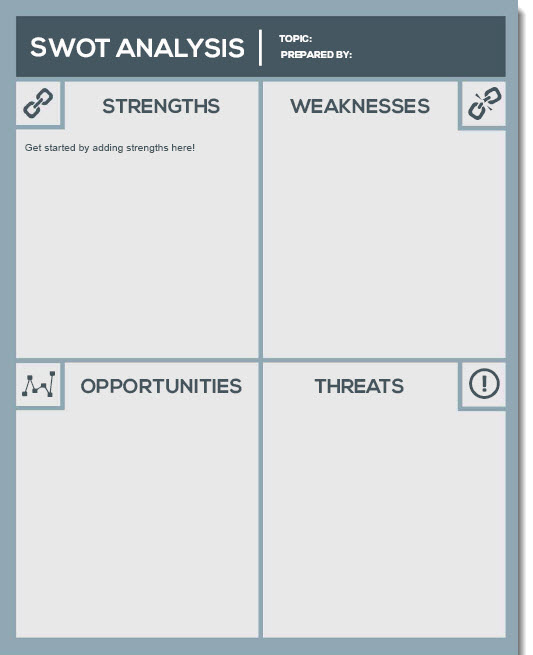In yesterday’s Advisor, Deedee Myers, PhD, MSc, PCC, discussed the SWOT approach to strategic planning. Today, Myers contrasts SWOT with appreciative inquiry theory and SOAR.
 |
Appreciative Inquiry Theory
In contrast to SWOT (see yesterday’s Advisor for more details), another approach, based on appreciative inquiry (AI) theory, engages stakeholders to identify clearly, understand, and—most importantly—communicate and take effective action.
The outcomes should enhance individual and organizational values, provide direction and purpose, establish core and unique capabilities, identify and leverage strategic opportunities, and help form structures and systems to create a positive organizational environment that enhances and sustains the organization’s unique value offering.
The AI approach allows an organization to:
- Know what happens when the organization works at its best.
- Build on its strengths (the positive core).
- Discover emerging opportunities from the current base of business.
- Visualize goals and strategic alternatives.
- Identify enabling objectives.
- Design strategies and tactics to integrate with the organization’s most successful programs.
- Implement a dynamic, continuous, and living strategic plan.
- Practice capacity building in the organization.
- Create an image and actions to work toward the best possible future.
SOAR
The SOAR (strengths, opportunities, aspirations, and results) framework of the strategic planning process includes:
- Strengths: Provocative questions and conversations bring to mind what you believe about individual, team, and organizational strengths regarding execution and accountability. In preplanning, qualitative (anecdotal) and quantitative data are used to support this conversation.
- Opportunities: Leveraging strengths, establish what opportunities exist based on external and internal environmental factors.
- Aspirations: In small and large group discussions, engage in conversations about the organization’s deep passions and how your unique individual aspirations align with the organization’s need for the strategic implementation of plans.
- Results: Discuss how to measure success on behalf of your stakeholders and how to determine the correct actions. Also validate how the organization leverages strengths, aspirations, and opportunities for the sake of the members and in order to deliver its strategy.
The focus is on future outcomes and the actions that will produce these results. The facilitator uses a blend of individual, partner, triad, and large-group work to ensure that every voice is heard and that the outcomes generated are meaningful.
Role of the HR Executive in Strategic Planning
Millennials want to make a difference; they enjoy being engaged at work, and they look for opportunities to be of service. The Baby Boomers have inherent wisdom and knowledge about the industry and organization. The HR executive charter is to support and develop the most valued asset—the people.
The AI approach to strategic planning brings forward diverse organization populations in a systematic and systemic approach to sustainability and creates a common commitment and focused energy in the organization.
The HR executive needs to sit at the strategic planning table to add value through people development and deployment opportunities. Make sure to do your research in advance, and come prepared to offer creative ideas. Research hiring trends, industry opportunities, reward philosophies, development programs, and much more. No strategic planning event should happen without the HR executive.
The AI approach is an innovation disrupter and produces a whole new way of thinking. Seek out a subject matter expert to learn how to get started, and learn this new way of thinking and being within an organization. Start using the language of opportunity today, and notice the immediate difference in your team.
